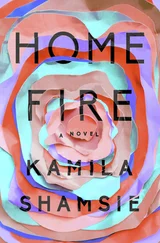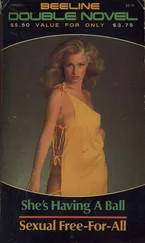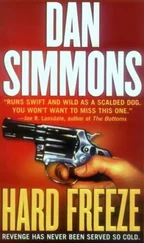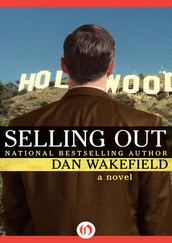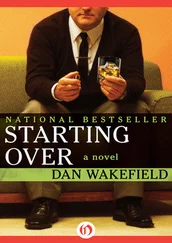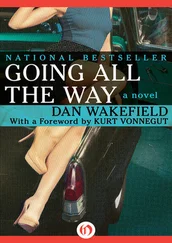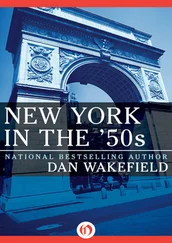Belle thought Donley was wonderful and admired his ingenuity at what she called “hornswoggling the public,” though Donley never admitted to that, he stood by his work as genuine Art. And who could tell? A hundred years from now? Anyway he was nice to Belle and gave her the free space in his loft.
“Was Donley one of your boyfriends?” Gene asked, beginning to be genuinely impressed with the number, variety, and talent of that category.
“Well, not what I mean by a boyfriend he wasn’t, he’s not ever really anyone ’s boyfriend, like living together or doing things with you. Donley just fucks people, and then he goes on and fucks other people. He isn’t a cad or anything, it’s just his way.”
That was enough about Donley, now they would get to see Belle’s work.
Gene was not prepared. He was speechless. Belle helped him out.
“Aren’t they wonderful?” she said.
The Palm Trees.
Belle had more palm trees than Donley had tires. That was her art. Everything was palm trees. Paintings of palm trees of all shapes and sizes, in different places at different times of night and day: palm trees at sunset, palm trees by moonlight, palm trees by the ocean, palm trees on the street, individual palm trees, and rows of palm trees. In addition to the paintings there were ceramic palm trees and palm trees cut from beer cans, palm trees made of pipe cleaners and palm trees carved from wood.
“They really are something!” Gene said.
“Don’t you love them?”
“Yes, I really do. I just hadn’t expected—all of them.”
“Well, you can’t have too much of a good thing. Of a wonderful thing. To me, they’re just wonderful. Not only because they’re beautiful but because they mainly grow here as far as this country, so if you see a palm tree you think of Southern California. Or if you don’t you should .”
“I see what you mean. Absolutely.”
Belle sighed.
“What gets my goat,” she said, looking at the other part of the loft, “is that Donley can sell all his tires to people for exorbitant sums and I can’t sell my palm trees. It isn’t fair.”
“I agree.”
He really did. He thought many of the palm trees were perfectly swell, and he would have far preferred one of those to a velvet-covered automobile tire. He found out, though, when he asked people, that Belle’s problem was not so much one of “art” but to put it gently of “public relations.” Friends had got gallery owners to look at her work, but fearing they might not like it Belle always attacked them before they could criticize her palm trees first. One wealthy gentleman of the L.A. art world who looked at her work had started to say something about the difficulty of introducing new artists, even very talented ones, and before he could finish Belle had called him a “gutless fag” and kicked him in the shins. She had also kicked in the shins of an influential lady gallery owner who had simply asked if Belle ever painted anything else but palm trees. So most of Belle’s paintings were sold to friends, or friends of friends. Her boyfriends all bought at least one palm tree during the course of the affair, sometimes at prices that demonstrated an appreciation of Belle as well as her art. But aside from such personal patrons there were genuine nonpartisan supporters of her work, there were palm trees hanging in distinguished homes from Beverly Hills to Malibu, and one as far north as Santa Barbara. That’s about as far north as she’d want one to go unless it was a special unusual person who lived up there. She considered San Francisco and its citizens almost as unredeemable as New York and the poor souls who didn’t know any better than to live in it.
After Belle showed Gene her Art she showed him a little of Venice. The nicer part, around Washington Street and the pier. It wasn’t fancy by any means but there were some nice little bars and informal places to eat, a good fish joint, a new wine and cheese shop with tables where you could have a light lunch, a bar with sawdust on the floor, and a popcorn machine with bowls beside it so you could just scoop some out free to go with your beer. Ocean Front Walk was a straight little sidewalk that went along in front of the houses facing the beach. The houses were mostly one- or two-story, stucco and frame and fieldstone, pleasant-looking, individual, and unpretentious. They weren’t “beach houses,” they were just ordinary houses that happened to be on a beach. The beach was long and white and there were hardly any people on it. Gene asked if it got crowded in the spring and summer and Belle said no.
“How come?” Gene asked. “It looks real nice.”
“People don’t come to this beach,” Belle explained. “They go to the beach at Santa Monica.”
“Oh.”
They went out on the Venice pier, looking down at the ocean lapping at the posts, looking at the people, some strolling, some staring out to sea, some fishing. There were little kids and old men and a couple of young black guys, fishing with long rods, buckets beside them, cans of bait. At the end of the pier was a round wooden concession stand where you could buy hot dogs and coffee and pop. Everything was windy, and fresh. Gene even liked the strong fishy smell of things. They walked back and had salads and glasses of white wine at the wine and cheese place. Belle said this Venice was started in the twenties by some man or group of men who wanted to build a town that would be a California version of the other Venice. The one in Italy. They even dug the canals. Then the Depression came and the whole thing went bust and never really recovered. That’s why you still saw these ditches running through the place, some completely dry, some with a little stagnant green water, they were supposed to have been canals. Some artists and writers lived here and other people who liked it because it was cheap and funky and the beach was so pretty.
“It’s different,” Gene said. “The feel of it. It’s kind of like a resort.”
Belle giggled.
“The last resort!” she said.
Maybe so. Maybe that’s part of what he liked about it. Whatever it was, he was drawn to the place.
He rode out to Venice with Belle again the next day, figuring he’d nose around a little, play it by ear, see what came along.
Belle invited him to join in a search for Donley, who hadn’t been at the studio for over a week and had promised to take some of her palm trees to a gallery owner he knew in Ojai. Gene didn’t have anything definite he was going to do, and said he’d be glad to help her track down Donley.
The ingenious tire sculptor lived in a little ramshackle house the next street over from the loft-garage. A sleepy-looking girl in a man’s bathrobe opened the door and said Donley wasn’t home, she had no idea, where or when or if ever.
“That was no lie,” Belle said as they walked away.
“Where do we go now?” Gene asked, following Belle’s swift stride.
“Uncle Phil’s.”
“Donley’s uncle?”
“Everyone’s.”
Uncle Phil lived in a large red-brick apartment building shaped around a courtyard, facing right onto the ocean. A kid was playing with a toy train in the courtyard while a young woman wearing shorts and a tie-dye T-shirt looked on, smoking a cigarette. Belle looked around her and said Uncle Phil’s apartment was right on the ground floor but she could never remember what door it was, they all looked alike. None had numbers.
Belle looked at the young woman and said, “Which one’s Uncle Phil’s door?”
The woman shook her head, stood up, took the kid inside.
Belle sighed.
“That’s Venice for you.”
“What’s wrong?”
“They all protect each other. It’s nice, but it’s kind of paranoid. They think if you’re looking for someone you must be fuzz or a bill collector or a hit man. They’re very loyal, though, especially if you’ve committed a crime.”
Читать дальше

